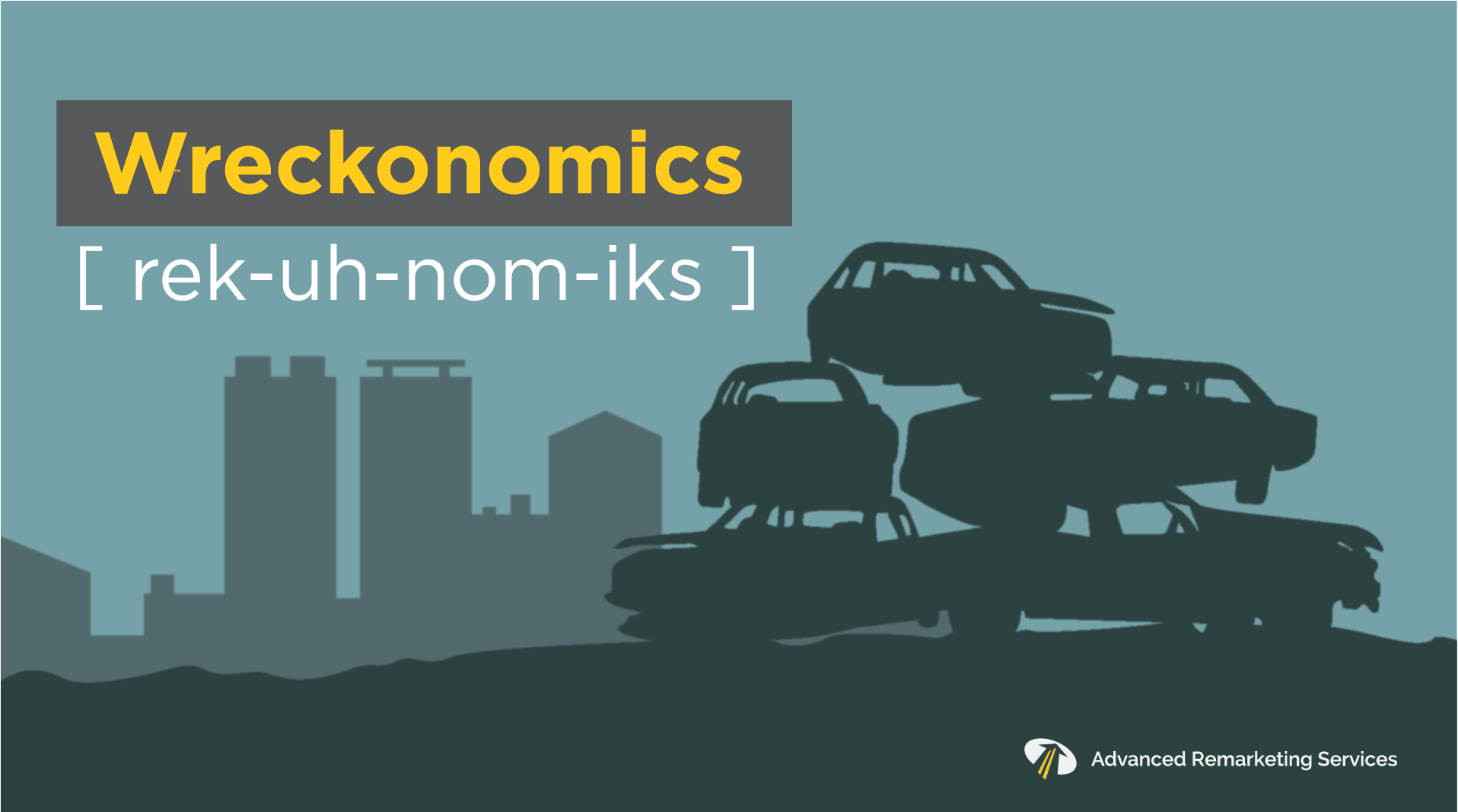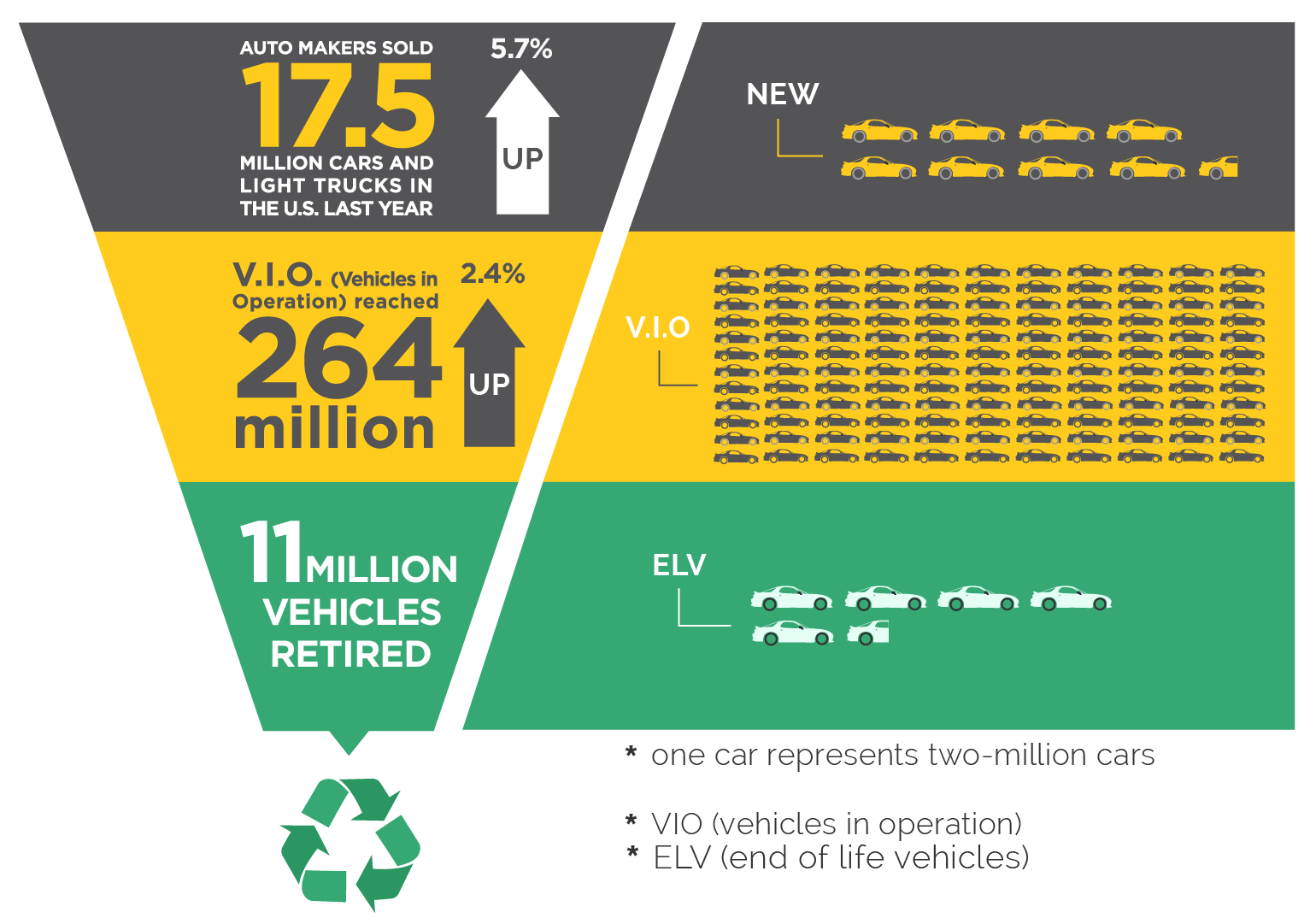[avatar user=”jhearn” size=”thumbnail” align=”left” /]
To focus on the market for low value and end of life vehicles we need to first look at the entire Auto Marketplace and US Roadways. First a glance at Vehicles in Operation (VIO).
Today, there are over 264 million cars and trucks in operation in the U.S., an increase of 2.4% and an all time high. This number includes all vehicles manufactured domestically and internationally for sale here. Last year, U.S. Consumers purchased nearly 17.5 million new cars and ‘retired’ or recycled 11 million cars.
A Closer Look at VIO:
There are dozens of interesting features about VIO. For instance, ten years ago the conversation would have included an infographic featuring ‘domestic’ vs. ‘foreign’ unit volume but American consumers don’t seem to be much influenced by this topic any longer. According to Cars.com 2016 American Made Index, The Toyota Camry was the most ‘American Made’ auto model.. The index recognizes cars that are assembled in the U.S. using a high percentage of domestic parts. There are only 8 vehicles that meet the 75% threshold of the index and five of those models are ‘Foreign automakers’
On the subject of ‘foreign’ the world’s most populous nation China’s VIO was 145 million cars in 2015. That is 45% less than the United States. However, Chinese population is 3.3 times greater than the U.S. population. This startling fact doesn’t make the US number one in VIO per capita, that distinction goes to San Marino followed by Monaco and then the U.S. comes in at #3.
For our Wreckonomic purposes we’ll focus more on demand and retirement of vehicles. You may have noticed that scrappage and recycling numbers don’t meet the volume of new cars coming into VIO. (17.5m vs. 11m)
As a result, even with record new car sales, vehicles on U.S. roadways are trending ‘older’. The average age of a car or truck on US Roadways is now at a record length of 11.6 years old. Further, one out of every four vehicles in the U.S. was built before the year 2000. CNBC Americans are Holding on to Their Cars Longer than Ever.
Older Vehicles in VIO
The aging of VIO means that fleet operations, finance operations, insurance companies and dealers are seeing higher frequency of high mileage, older units. Not all of these older units are ELVs (End of Life Vehicles), older vehicles represent an important segment of American transportation. They provide reliable transportation to working families and lower income groups. Not surprisingly, Owner costs decrease significantly as cars age. Maintenance expense on these units is kept down by parts availability and lower repair costs. Due to the relative lack of technical complexity and electronic components, these older units can still be primarily maintained by owners. The demand for these older units is seen through the rapid growth of “Buy Here Pay Here” dealerships that cater to financially or credit challenged buyers by offering low down payments and in-house financing.
It is true that, these aged units have more limited opportunities at retail and present unique challenges at wholesale but properly managed can propel stagnant returns or recoveries. We work with our clients to look at these lower value segments and identify if processing, remarketing and cycle time can be reorganized for success. (We’ll take a closer look at these challenges and opportunities in Wreckonomics 1.4)
Retirement and Recycling
So what does ‘End of Life’ really mean for automobiles?.
The Automobile is the most recycled consumer product. An ELV supports several different recycling channels. These channels are part of a worldwide demand for parts or materials and helps to propel manufacturing, construction and other verticals. The aging vehicle isn’t subject to a siloed supply and demand valuation. Properly managed older assets have long term value outside the used car market. We will look at some of the recycling realities in our next Wreckonomic post:
| ARS Helps our clients identify low value and ELV units in their asset pool, focus services for the remarketing or recycling and delivering the highest possible returns..
If you have a pool of low value vehicles in your portfolio or if you’re looking at ways to maximize recoveries, please reach out to us at ARS. send us an email; success@arscars.com STAY IN THE CONVERSATION Visit ARS Market & Metals blog: https://www.arscars.com/category/market-metals/ And subscribe for updates |

